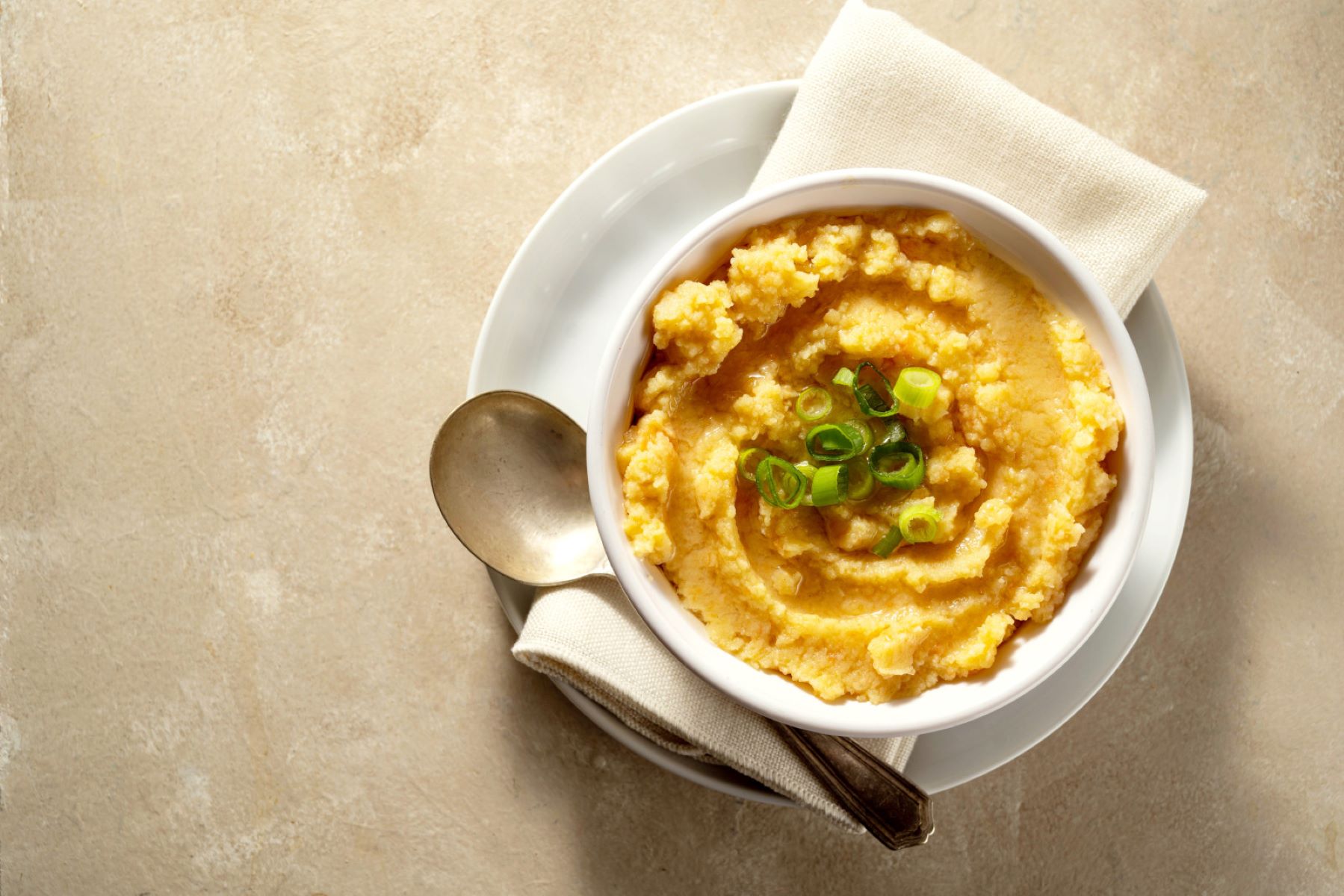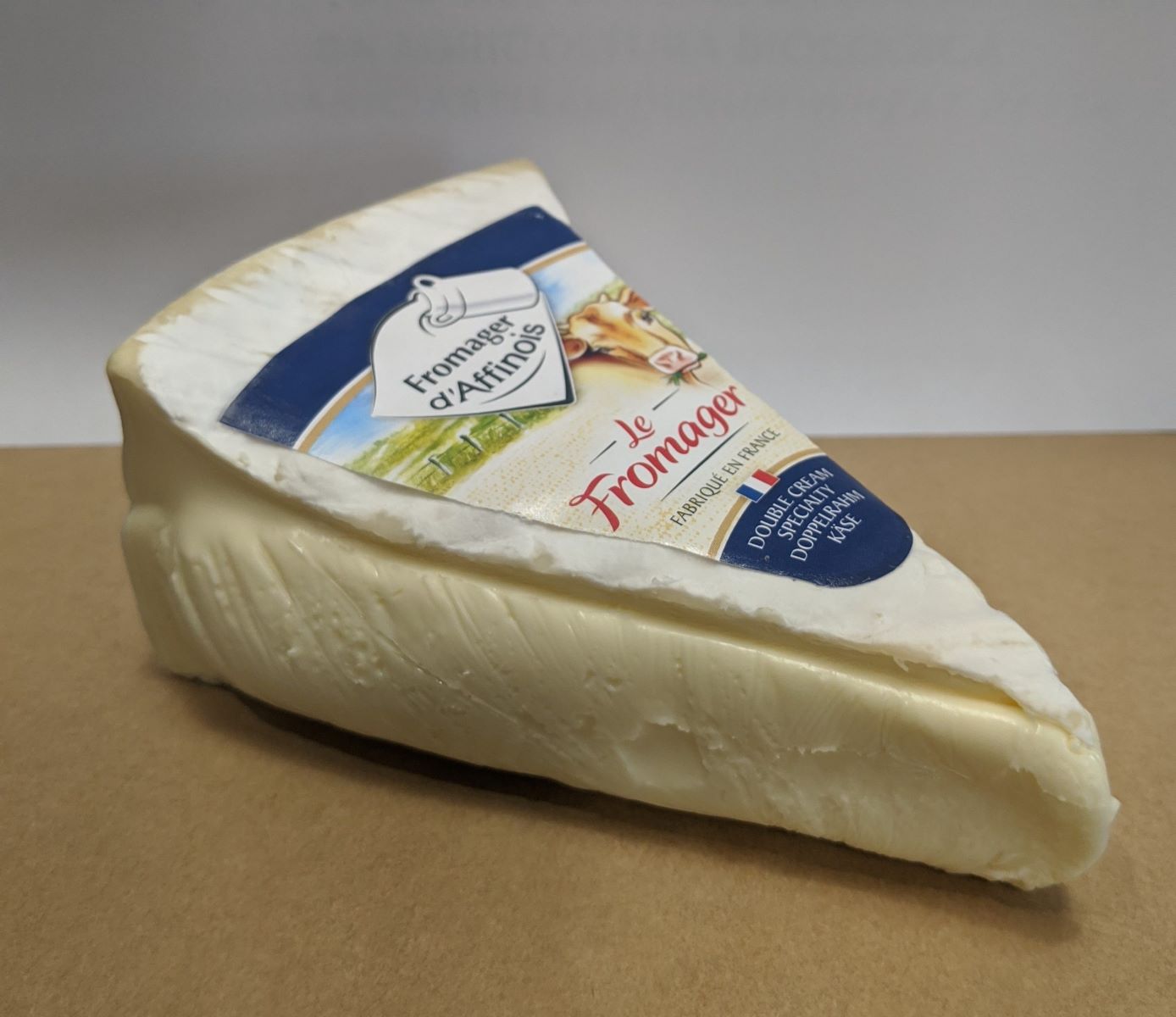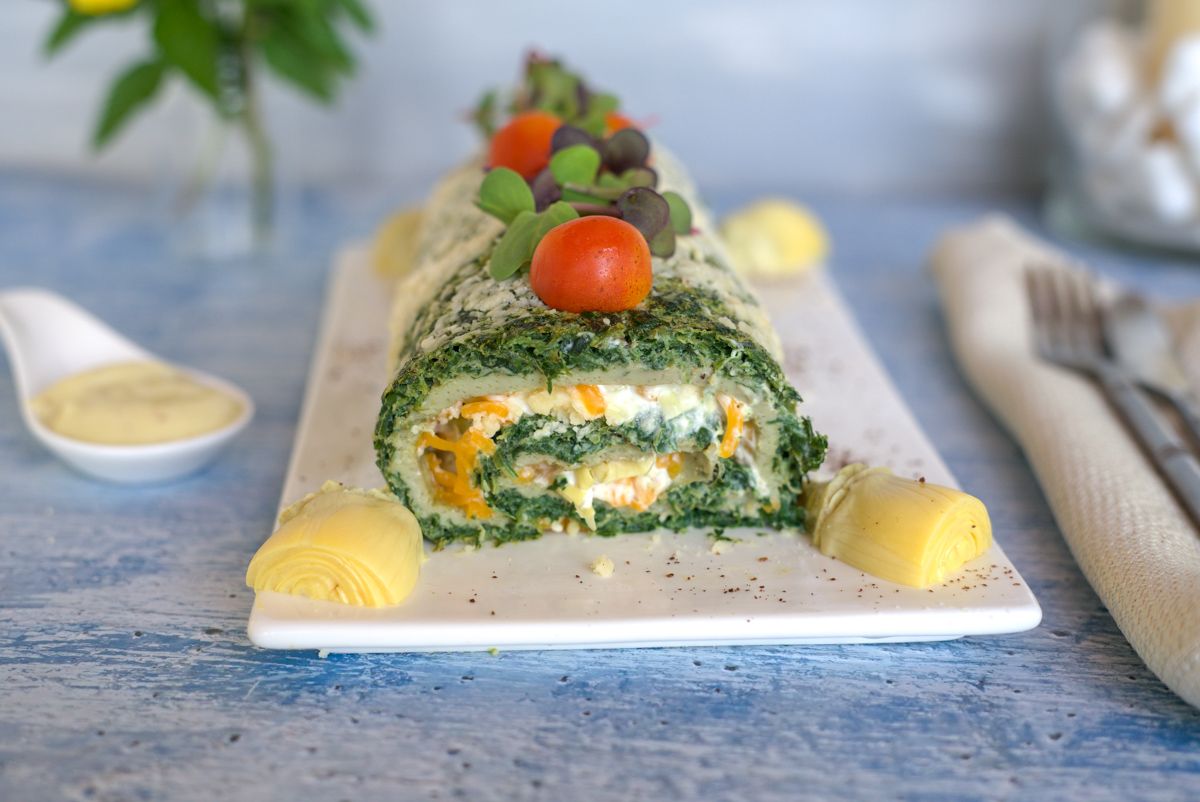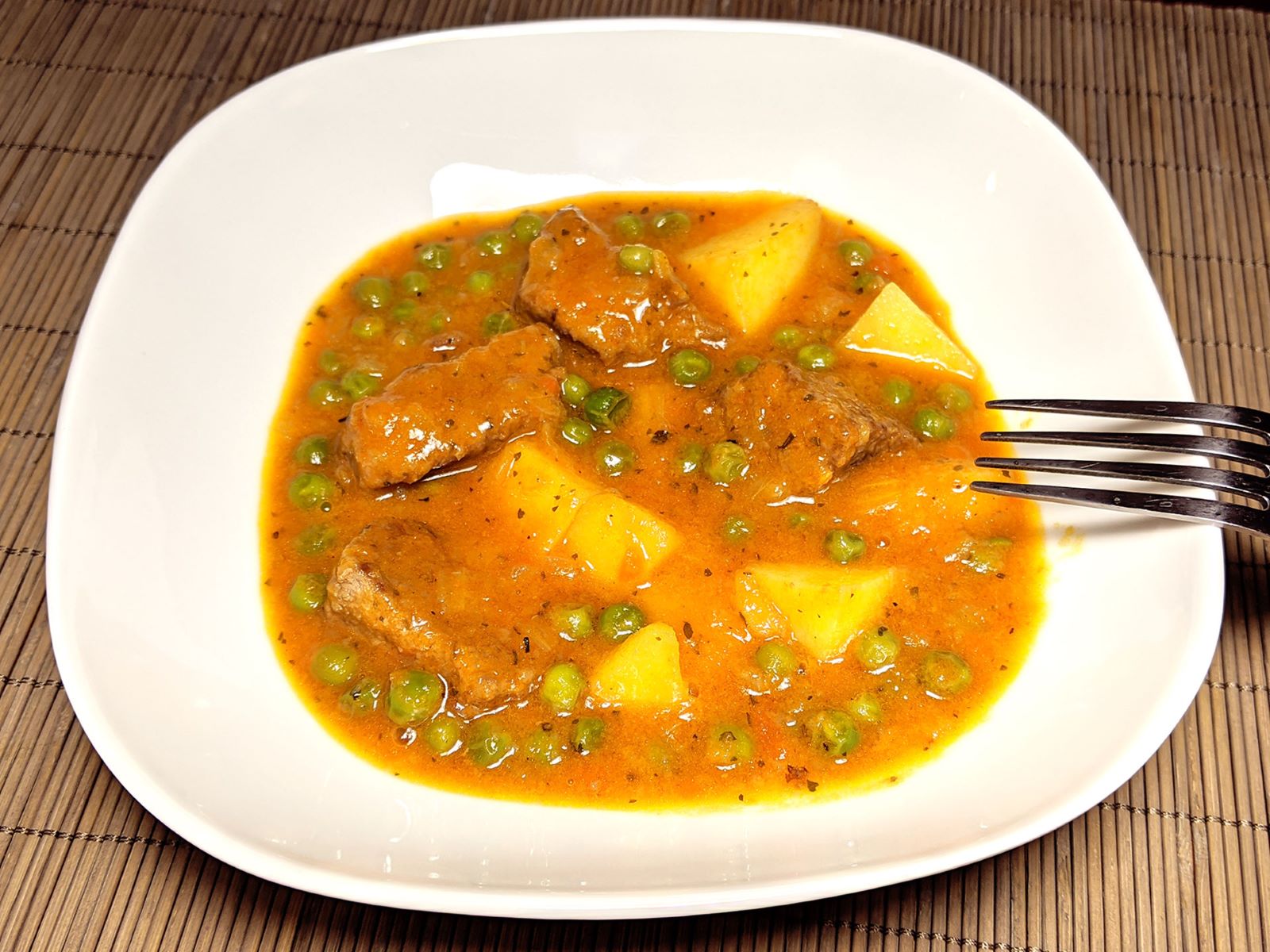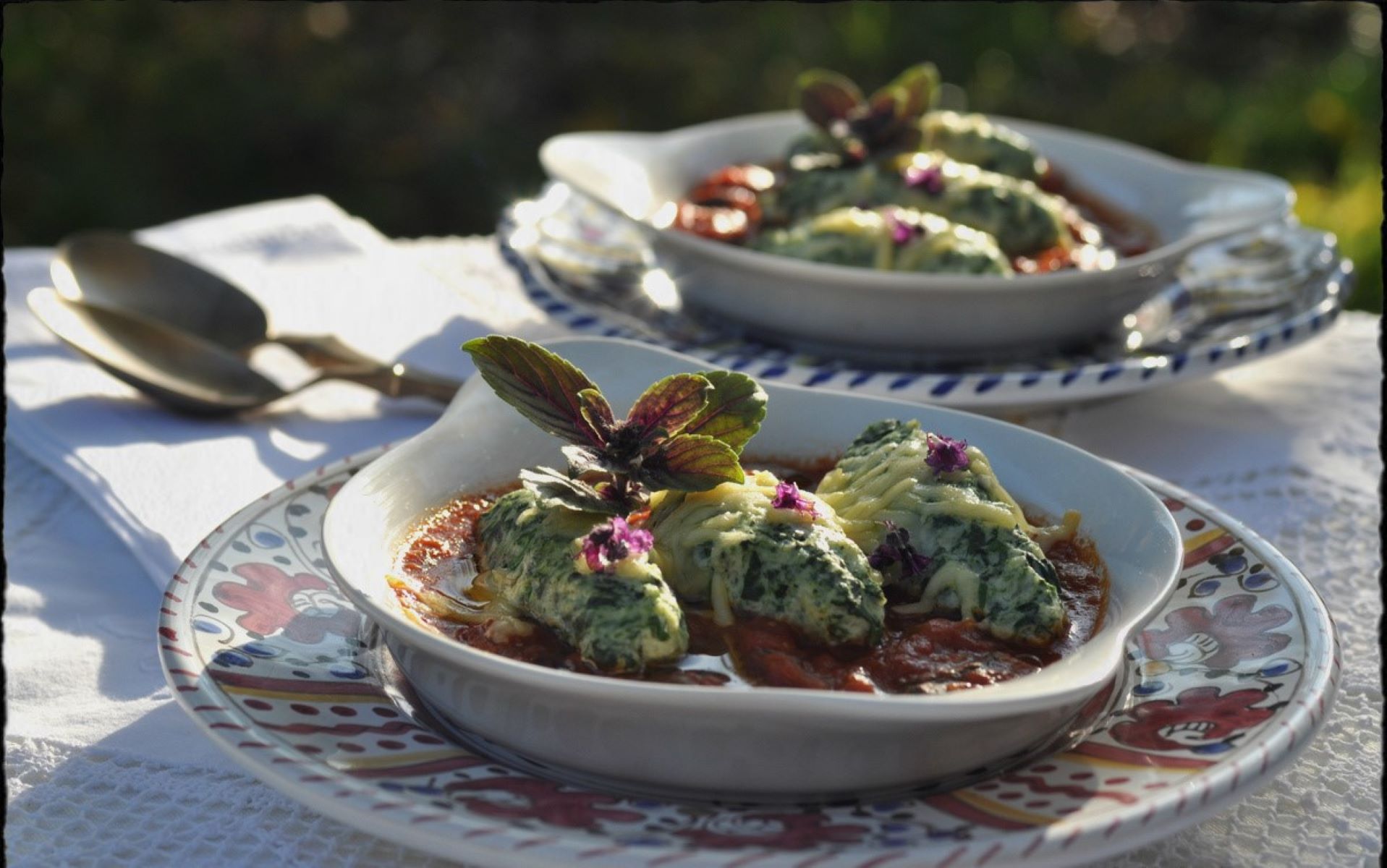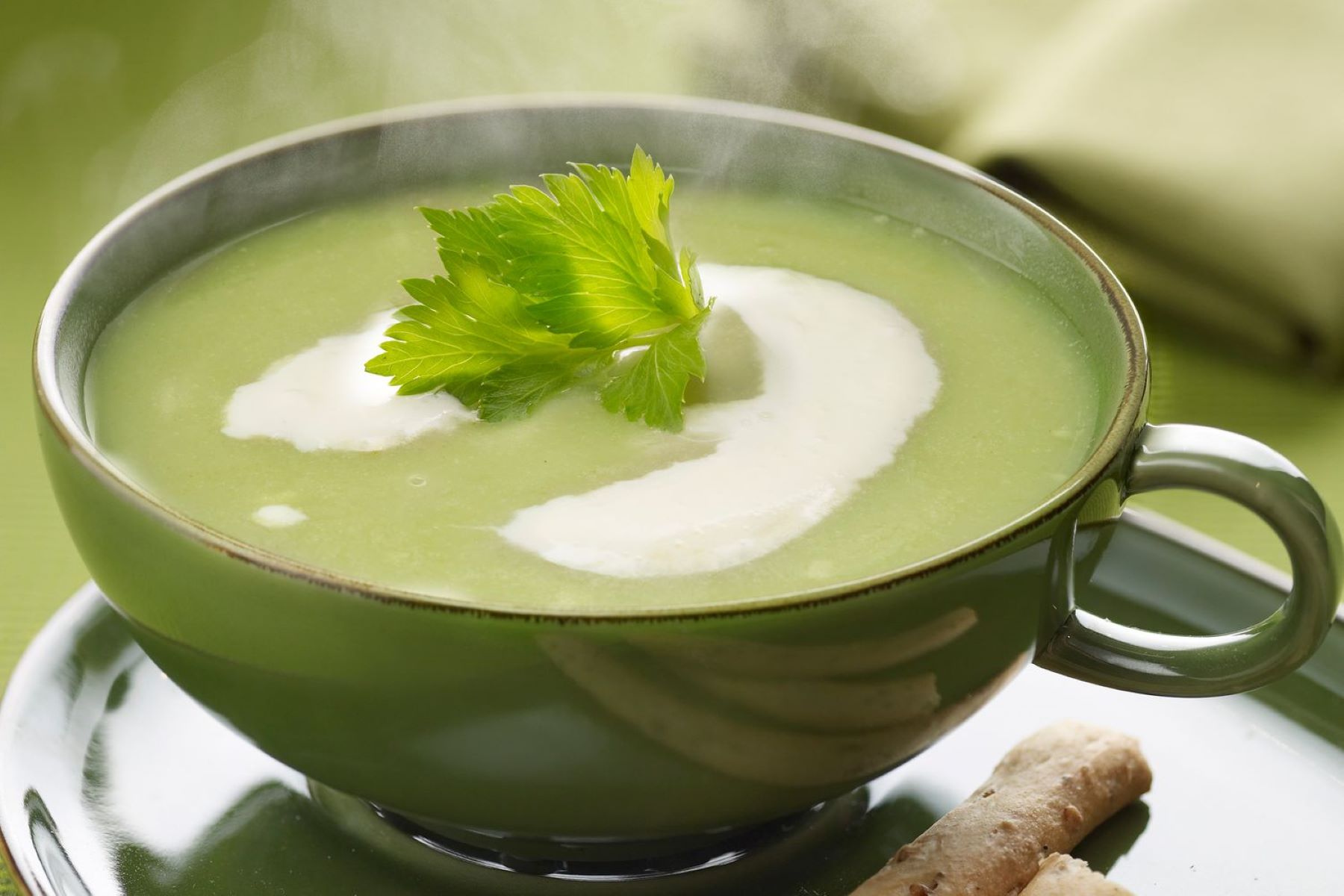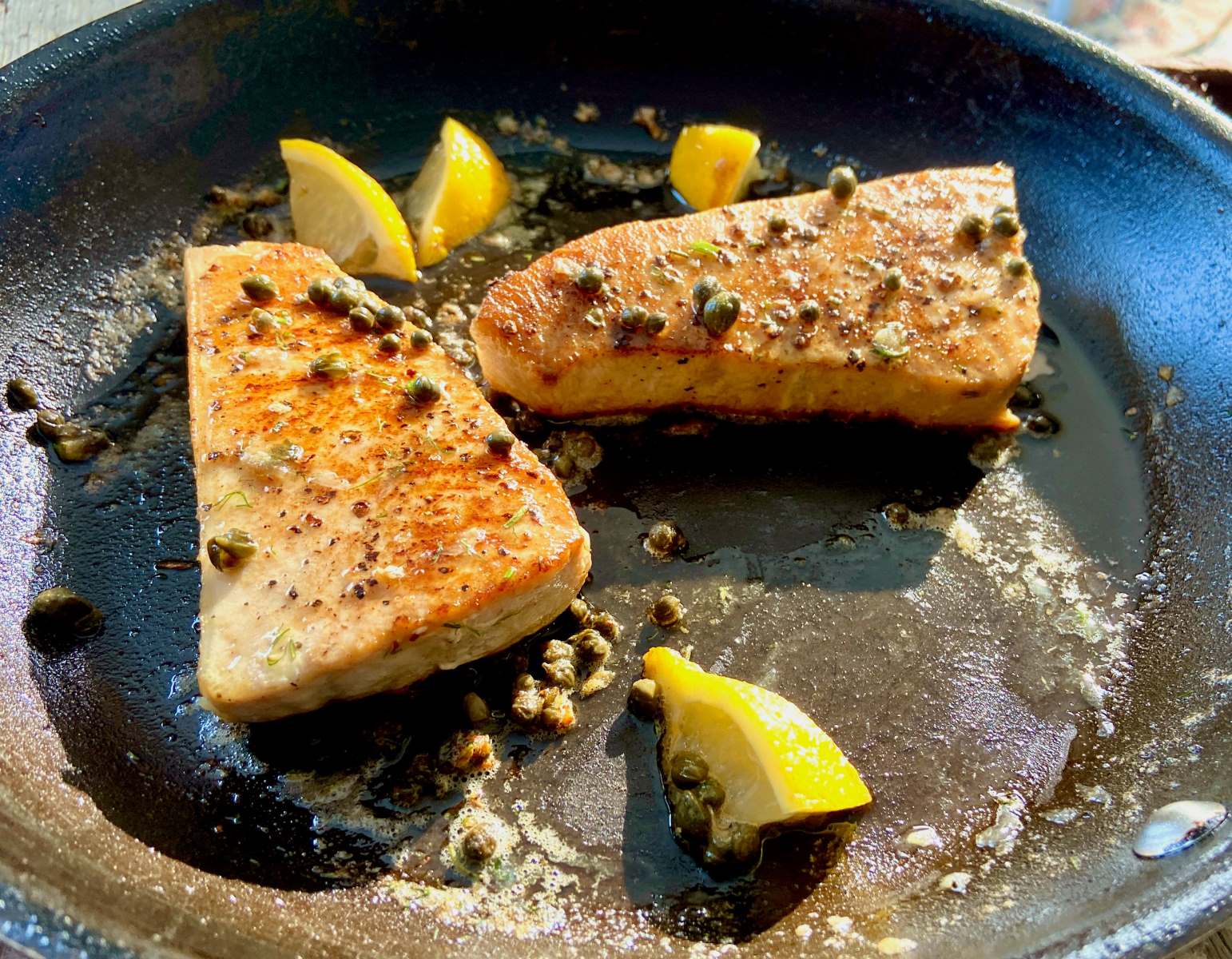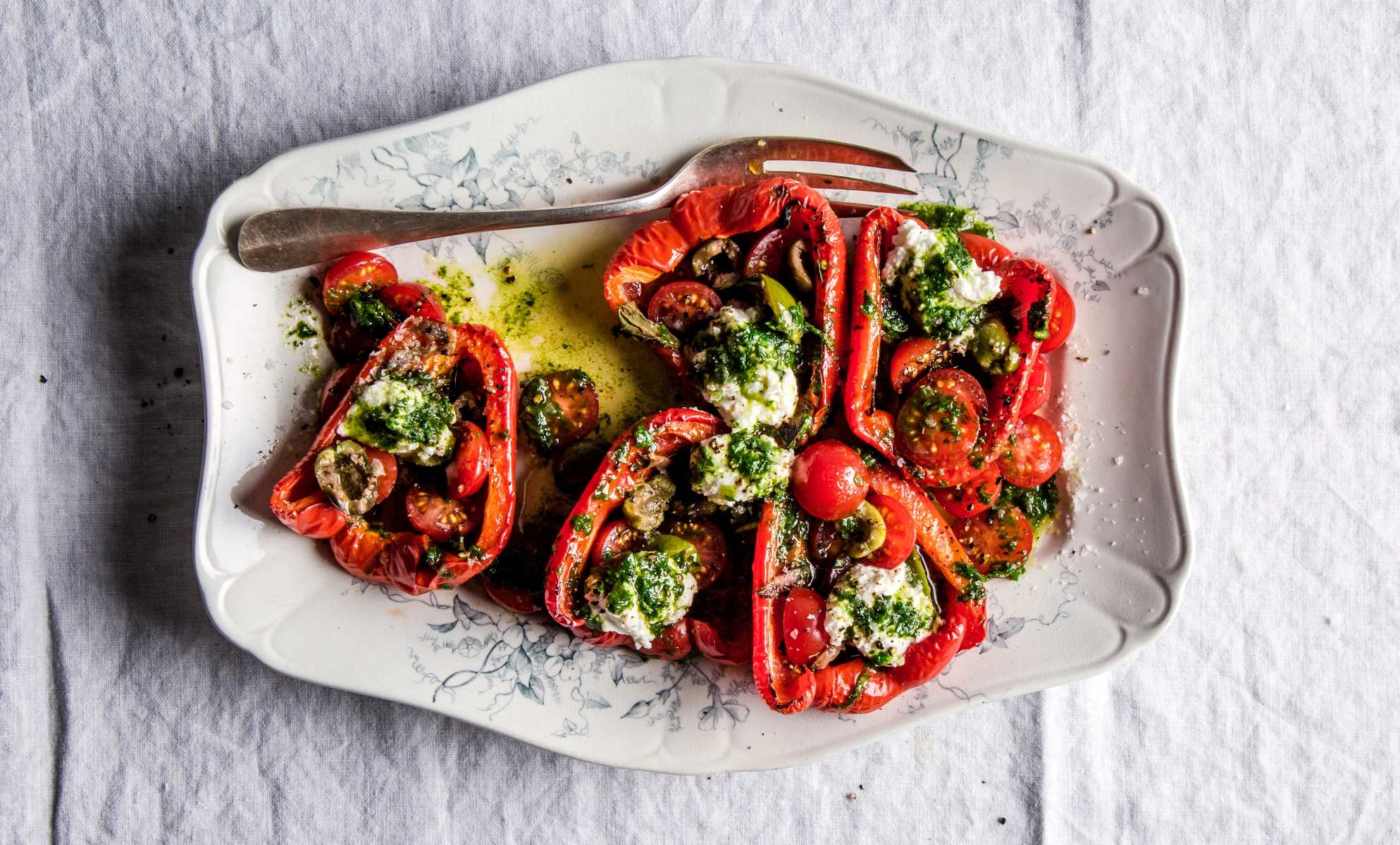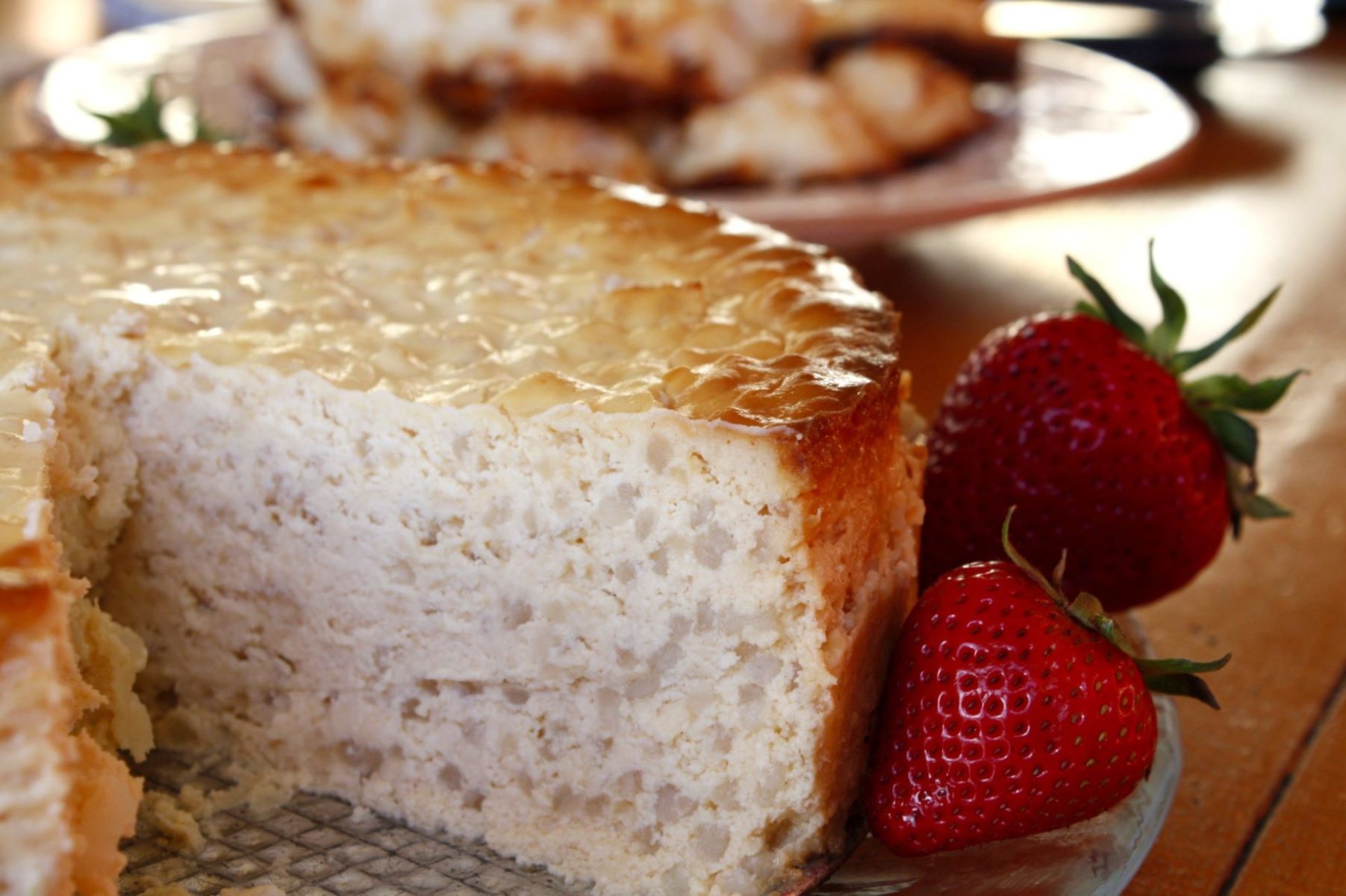Home>Eating>Discover The Deliciousness Of Omurice: A Traditional Japanese Omelette Dish
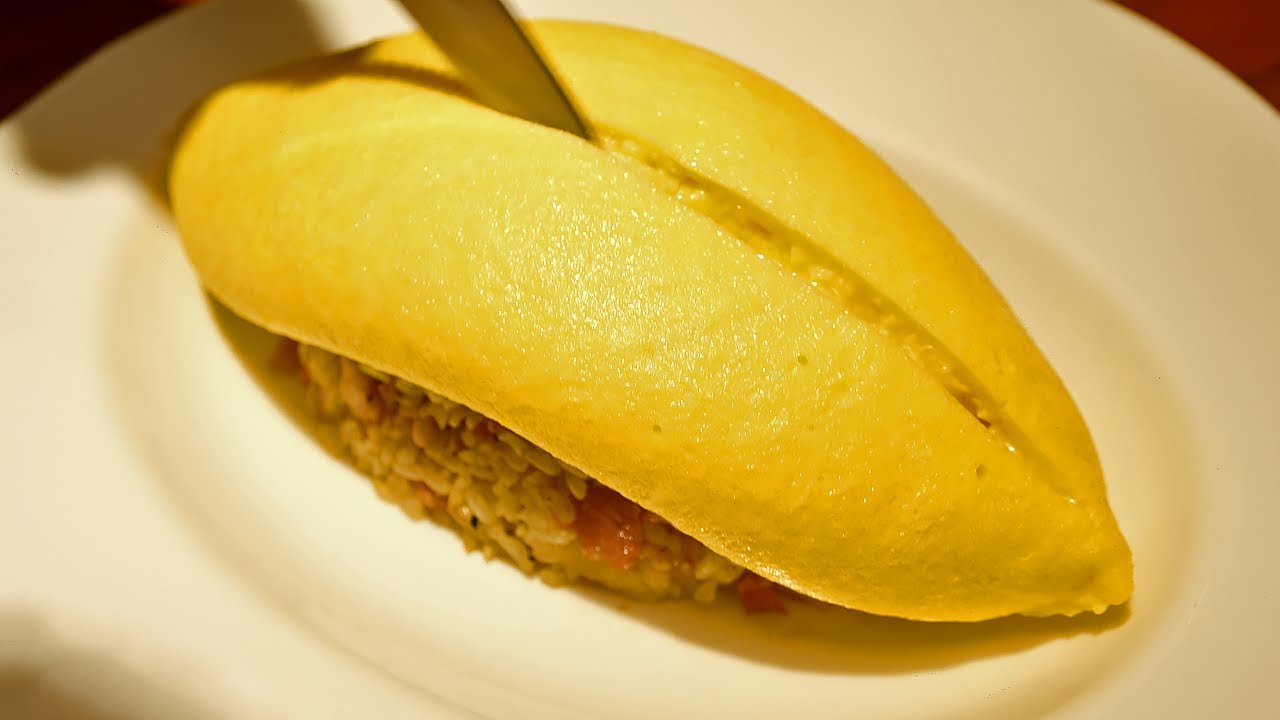

Eating
Discover The Deliciousness Of Omurice: A Traditional Japanese Omelette Dish
Published: February 15, 2024
Indulge in the delightful flavors of Omurice, a classic Japanese omelette dish that will satisfy your craving for authentic and delicious eating experiences. Discover the perfect blend of savory rice and fluffy eggs in this traditional culinary delight.
(Many of the links in this article redirect to a specific reviewed product. Your purchase of these products through affiliate links helps to generate commission for Simplelivingeating.com, at no extra cost. Learn more)
Table of Contents
Introduction
Omurice, a delightful fusion of Western omelette and Japanese fried rice, is a beloved dish that tantalizes the taste buds with its harmonious blend of flavors and textures. This iconic Japanese comfort food has captured the hearts and palates of food enthusiasts around the world, offering a delectable experience that marries the familiarity of omelettes with the savory allure of fried rice.
The name "omurice" itself is a charming portmanteau, combining "omelette" and "rice," which succinctly encapsulates the essence of this culinary masterpiece. With its roots deeply embedded in Japanese cuisine, omurice has evolved into a versatile and customizable dish that reflects the creativity and ingenuity of its chefs.
The allure of omurice lies not only in its sumptuous taste but also in the artistry of its presentation. The sight of a fluffy omelette enveloping a mound of savory fried rice, often adorned with a drizzle of tangy ketchup, is a feast for the eyes as well as the palate. This visual appeal adds an extra layer of enjoyment to the dining experience, making omurice a true feast for the senses.
As we delve into the world of omurice, we will uncover the rich history behind this beloved dish, explore its diverse variations, and unravel the cultural significance it holds in Japan and beyond. Join us on a culinary journey as we unravel the secrets of omurice and discover the delightful nuances that make it a cherished classic in the realm of global gastronomy.
History of Omurice
The history of omurice traces back to the early 20th century, during a time when Japan was undergoing a transformative period of cultural exchange with the West. It is believed that omurice was inspired by Western-style omelettes, which were introduced to Japan during the Meiji era. As Japan opened its doors to foreign influences, the culinary landscape underwent a fascinating evolution, giving rise to innovative fusion dishes that melded traditional Japanese ingredients with Western cooking techniques.
The exact origins of omurice are somewhat shrouded in mystery, with multiple theories surrounding its inception. One popular belief is that omurice was first created in Tokyo, where creative chefs sought to infuse the beloved omelette with a touch of Japanese flair. Another theory suggests that omurice emerged in Western-style cafes that dotted the urban landscape, catering to the growing appetite for Western cuisine among the Japanese populace.
Regardless of its precise origins, omurice quickly gained popularity as a comforting and satisfying meal that appealed to people of all ages. Its humble yet flavorful combination of fluffy eggs and savory fried rice struck a chord with diners, earning it a place in the hearts of food enthusiasts across Japan. Over time, omurice became a staple in family kitchens, restaurants, and even school cafeterias, solidifying its status as a beloved culinary classic.
As the years passed, omurice continued to evolve, with chefs and home cooks adding their own creative twists to the dish. The addition of ketchup, which became a defining feature of omurice, further enhanced its appeal, lending a delightful tangy sweetness to the savory rice and eggs. This simple yet ingenious touch elevated omurice to a new level of culinary delight, cementing its reputation as a comfort food favorite.
Today, omurice remains a cherished dish in Japan and has also garnered a dedicated following in various parts of the world. Its enduring popularity is a testament to the timeless appeal of this delightful fusion creation, which continues to bring joy to countless diners seeking a comforting and satisfying meal.
The history of omurice is a testament to the enduring allure of fusion cuisine, showcasing how culinary traditions can intertwine to create something truly extraordinary. This beloved dish stands as a delicious embodiment of cultural exchange and culinary innovation, inviting us to savor its rich history with every flavorful bite.
Ingredients and Preparation
The beauty of omurice lies in its simplicity, as it brings together a handful of humble yet flavorful ingredients to create a dish that is greater than the sum of its parts. The key components of omurice include eggs, rice, vegetables, protein such as chicken or ham, and a savory sauce, often featuring ketchup as a prominent element. Let's delve into the delightful alchemy of preparing this beloved Japanese comfort food.
Ingredients
For the Fried Rice:
- Cooked white rice: The foundation of omurice, preferably short-grain rice for its sticky texture.
- Onion: Finely diced for a subtle sweetness and aromatic depth.
- Mixed vegetables: Common choices include carrots, peas, and bell peppers, adding color and a medley of flavors.
- Protein: Diced chicken, ham, or even seafood can be used to infuse the fried rice with savory goodness.
- Salt and pepper: To season the fried rice to perfection.
For the Omelette:
- Eggs: Whisked to a light and frothy consistency, ready to envelop the flavorful fried rice.
- Salt: To enhance the natural flavors of the eggs.
For the Sauce:
- Ketchup: A defining element of omurice, adding a tangy sweetness that complements the savory notes of the dish.
Preparation
-
Frying the Rice: In a skillet or wok, sauté the diced onions until they turn translucent. Add the mixed vegetables and protein, cooking until they are tender and fragrant. Incorporate the cooked rice, stirring gently to ensure that the ingredients are evenly distributed. Season the fried rice with salt and pepper, infusing it with a harmonious blend of flavors.
-
Forming the Omelette: Whisk the eggs in a bowl and season with a pinch of salt. In a separate non-stick pan, pour the beaten eggs and cook over low heat. As the edges begin to set, gently fold the omelette in half, creating a delicate pocket to hold the luscious fried rice.
-
Plating the Omurice: With finesse, carefully place a generous portion of the savory fried rice into the center of the omelette. The omelette is then folded over the rice, creating a seamless and inviting package that conceals the flavorful treasure within.
-
Drizzling with Sauce: A final touch of artistry involves drizzling a luscious swirl of ketchup over the assembled omurice, adding a pop of color and a burst of tangy sweetness that harmonizes with the savory ensemble.
The art of preparing omurice lies in the delicate balance of flavors and textures, as well as the visual appeal of the final presentation. This simple yet captivating dish embodies the essence of comfort food, inviting diners to savor its delightful union of eggs, rice, and a symphony of complementary ingredients.
Read more: Discover The Exquisite Delicacy Of Belgium Mussels – A Must-Try Dish From Around The World
Variations of Omurice
Omurice, with its versatile nature, has inspired a myriad of delightful variations that cater to diverse palates and culinary preferences. From innovative ingredient combinations to unique presentation styles, the world of omurice is brimming with creative adaptations that elevate this beloved dish to new heights of gastronomic delight.
1. Filling Variations
The filling of omurice offers ample room for creativity, allowing chefs and home cooks to experiment with an array of proteins, vegetables, and seasonings. While classic omurice often features chicken or ham as the primary protein, variations may include succulent shrimp, tender beef, or a medley of seasonal vegetables. This flexibility enables omurice to adapt to different dietary preferences and seasonal inspirations, ensuring that each rendition offers a delightful surprise for the taste buds.
2. Sauce Innovations
While ketchup remains the quintessential sauce for omurice, some variations introduce unique twists to the traditional condiment. From tangy barbecue sauce to savory demi-glace, the sauce component of omurice can undergo delightful transformations, infusing the dish with new layers of flavor. These innovative sauces add an element of surprise to the dining experience, inviting diners to savor familiar flavors in an entirely new light.
3. Regional Interpretations
As omurice has gained popularity beyond its Japanese origins, it has been embraced by chefs around the world who infuse their cultural influences into this beloved dish. In Korea, for example, omurice may feature gochujang, a spicy and savory chili paste, adding a delightful kick to the dish. In Western culinary circles, omurice variations may incorporate diverse cheese blends or smoky spices, offering a fusion of global flavors that captivate adventurous food enthusiasts.
Read more: Discover The Best Weekend Eateries In Paris
4. Presentation Styles
The art of presenting omurice extends beyond its flavorful components, with chefs showcasing their creativity through visually stunning presentations. Some variations of omurice are adorned with intricate ketchup art, where the crimson sauce is skillfully manipulated to create whimsical designs or intricate patterns. This attention to detail adds an extra layer of artistry to the dining experience, transforming omurice into a feast for the eyes as well as the palate.
5. Dietary Modifications
For those with dietary restrictions or specific nutritional preferences, omurice offers ample flexibility for modification. Variations tailored to vegetarian, vegan, or gluten-free diets abound, ensuring that everyone can partake in the joy of savoring this beloved dish. Innovative ingredient substitutions and creative culinary techniques enable omurice to accommodate a wide spectrum of dietary needs, making it an inclusive and welcoming addition to diverse dining tables.
The world of omurice is a tapestry of culinary creativity, where variations abound to cater to an array of tastes and preferences. Whether through inventive fillings, innovative sauces, regional influences, captivating presentations, or dietary modifications, each variation of omurice adds a delightful twist to this timeless classic, ensuring that it continues to captivate and inspire food enthusiasts around the globe.
Serving and Presentation
Serving and presenting omurice is an artful endeavor that elevates the dining experience, transforming a humble dish into a visual and gustatory delight. The manner in which omurice is served and presented adds an extra layer of allure, inviting diners to embark on a sensory journey that begins with the eyes and culminates in a symphony of flavors.
The presentation of omurice often begins with the careful arrangement of the dish on a pristine plate or platter, setting the stage for the culinary masterpiece about to unfold. The omelette, with its golden hue and delicate folds, serves as a captivating canvas upon which the savory fried rice will soon make its grand entrance. The anticipation builds as the dish is meticulously positioned, ensuring that every element is showcased in its full splendor.
As the omurice is unveiled, the visual impact is nothing short of mesmerizing. The fluffy omelette, glistening with a hint of ketchup, conceals the treasure trove of savory fried rice within its tender embrace. The contrast of colors, textures, and shapes creates a feast for the eyes, evoking a sense of anticipation and delight that sets the stage for the culinary experience to come.
The art of serving omurice extends beyond the initial presentation, encompassing the act of portioning and serving the dish to eager diners. With deft precision, the omelette is delicately sliced open, revealing the tantalizing contents nestled within. As the fragrant steam rises, carrying with it the aromas of seasoned rice and savory fillings, the allure of omurice reaches its peak, captivating the senses and whetting the appetite.
The serving of omurice is often accompanied by a flourish of final touches, such as a sprinkling of fresh herbs or a garnish of crisp vegetables, adding a touch of elegance and freshness to the dish. These thoughtful embellishments not only enhance the visual appeal of omurice but also offer a delightful contrast of flavors and textures, further enriching the dining experience.
With each meticulously crafted presentation and artful serving, omurice transcends the realm of mere sustenance, becoming a culinary work of art that beckons diners to indulge in its flavorful embrace. The careful attention to detail and the seamless fusion of visual and gustatory elements make serving and presenting omurice a captivating prelude to the delightful symphony of flavors that awaits those fortunate enough to partake in this beloved Japanese comfort food.
Omurice in Popular Culture
Omurice, with its irresistible blend of comforting flavors and captivating presentation, has transcended the realm of culinary delight to become a beloved icon in popular culture. This cherished Japanese dish has made its indelible mark in various forms of media, captivating audiences and leaving an enduring impression that extends far beyond the dining table.
In Japanese cinema and television, omurice often serves as a poignant symbol of nostalgia, homecoming, and heartwarming connections. Its appearance in heartwarming family dramas and endearing anime series evokes a sense of warmth and familiarity, resonating with viewers on an emotional level. The act of preparing and savoring omurice becomes a visual and narrative motif, weaving a thread of culinary nostalgia that binds characters and audiences alike.
Furthermore, omurice has found its way into the realm of culinary entertainment, where it is celebrated for its visual appeal and culinary artistry. Cooking shows and online culinary content often feature omurice as a centerpiece, showcasing the meticulous preparation and artful presentation of this beloved dish. Viewers are treated to a mesmerizing display of culinary skill as chefs deftly fold omelettes and artfully arrange savory rice, elevating omurice to a captivating spectacle that transcends mere sustenance.
In the realm of social media and food blogging, omurice has garnered a dedicated following, with enthusiasts sharing their creative interpretations and visually stunning presentations of this iconic dish. The hashtag #omurice frequently accompanies vibrant images of meticulously crafted omelettes, each concealing a treasure trove of flavorful fried rice. These captivating visuals, often accompanied by personal anecdotes and culinary adventures, showcase the enduring allure of omurice in the digital age.
Beyond its presence in traditional media, omurice has also inspired a wave of culinary innovation and fusion experimentation. Chefs and home cooks around the world have embraced omurice, infusing it with diverse cultural influences and inventive ingredient combinations. This global embrace of omurice reflects its universal appeal and its ability to transcend cultural boundaries, uniting food enthusiasts in a shared appreciation for its delightful flavors and captivating presentation.
In essence, omurice has become more than a culinary delight; it has evolved into a cultural touchstone that resonates with people across generations and geographical borders. Its endearing presence in popular culture serves as a testament to the enduring impact of this beloved dish, inviting audiences to savor not only its flavors but also the rich tapestry of emotions and connections it evokes.
Read more: Boxty: Traditional Irish Potato Pancakes
Conclusion
In conclusion, the journey through the world of omurice has unveiled a tapestry of culinary artistry, cultural significance, and enduring appeal. This beloved Japanese comfort food, with its humble origins and captivating evolution, stands as a testament to the timeless allure of fusion cuisine and the power of culinary innovation to transcend cultural boundaries.
From its intriguing history, rooted in a transformative era of cultural exchange, to its delightful variations that cater to diverse palates and preferences, omurice embodies the spirit of culinary creativity and adaptability. The seamless fusion of Western omelette and Japanese fried rice has given rise to a dish that not only tantalizes the taste buds but also evokes a sense of nostalgia, warmth, and connection.
The artful preparation and presentation of omurice elevate it from a simple dish to a visual and gustatory delight, inviting diners to embark on a sensory journey that engages the senses and stirs the emotions. Its presence in popular culture, spanning cinema, television, culinary entertainment, and social media, underscores its enduring impact and its ability to resonate with audiences on a profound level.
As we bid farewell to this culinary exploration, the legacy of omurice endures as a symbol of culinary ingenuity, cultural exchange, and heartwarming connections. Its presence on dining tables, in kitchens, and within the hearts of food enthusiasts worldwide serves as a testament to the enduring appeal of this beloved dish.
In the world of gastronomy, omurice stands as a shining example of the transformative power of fusion cuisine, the artistry of culinary presentation, and the universal language of comfort food. With each flavorful bite and captivating presentation, omurice invites us to savor not only its delightful flavors but also the rich tapestry of emotions and connections it evokes, ensuring that it remains a cherished classic in the realm of global gastronomy for generations to come.

